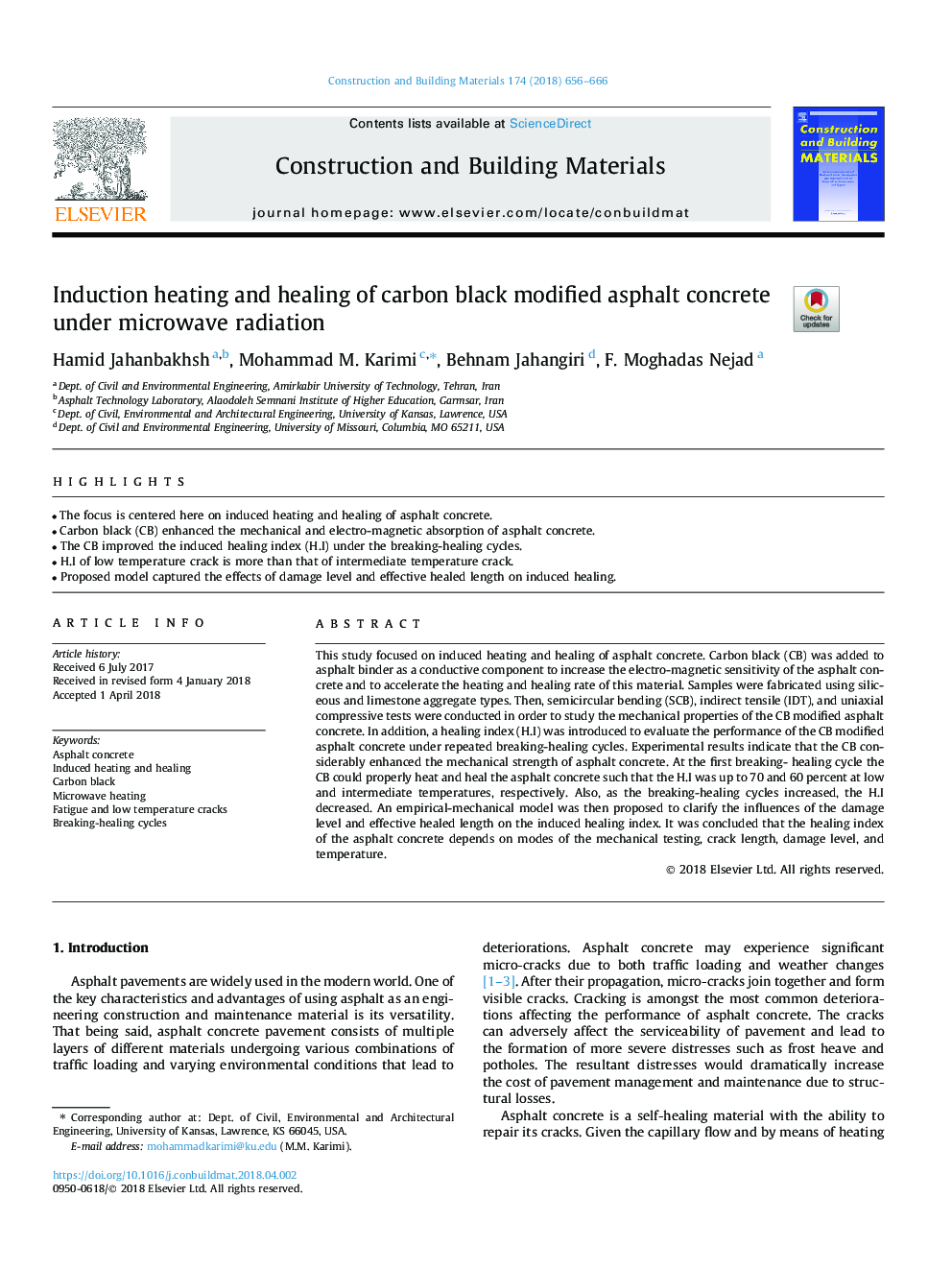| Article ID | Journal | Published Year | Pages | File Type |
|---|---|---|---|---|
| 6713626 | Construction and Building Materials | 2018 | 11 Pages |
Abstract
This study focused on induced heating and healing of asphalt concrete. Carbon black (CB) was added to asphalt binder as a conductive component to increase the electro-magnetic sensitivity of the asphalt concrete and to accelerate the heating and healing rate of this material. Samples were fabricated using siliceous and limestone aggregate types. Then, semicircular bending (SCB), indirect tensile (IDT), and uniaxial compressive tests were conducted in order to study the mechanical properties of the CB modified asphalt concrete. In addition, a healing index (H.I) was introduced to evaluate the performance of the CB modified asphalt concrete under repeated breaking-healing cycles. Experimental results indicate that the CB considerably enhanced the mechanical strength of asphalt concrete. At the first breaking- healing cycle the CB could properly heat and heal the asphalt concrete such that the H.I was up to 70 and 60 percent at low and intermediate temperatures, respectively. Also, as the breaking-healing cycles increased, the H.I decreased. An empirical-mechanical model was then proposed to clarify the influences of the damage level and effective healed length on the induced healing index. It was concluded that the healing index of the asphalt concrete depends on modes of the mechanical testing, crack length, damage level, and temperature.
Related Topics
Physical Sciences and Engineering
Engineering
Civil and Structural Engineering
Authors
Hamid Jahanbakhsh, Mohammad M. Karimi, Behnam Jahangiri, F. Moghadas Nejad,
